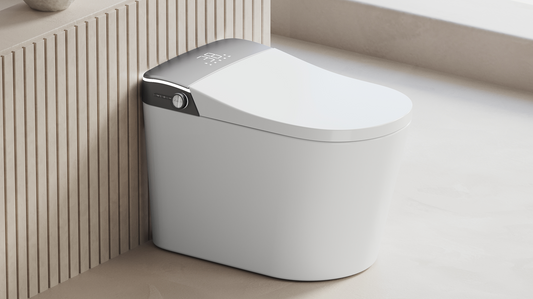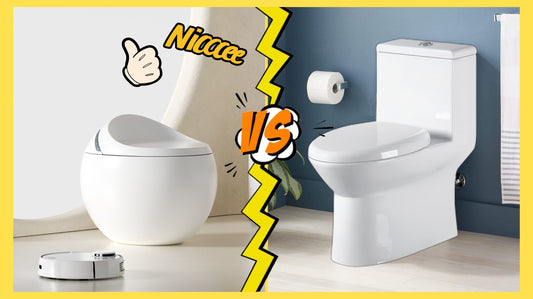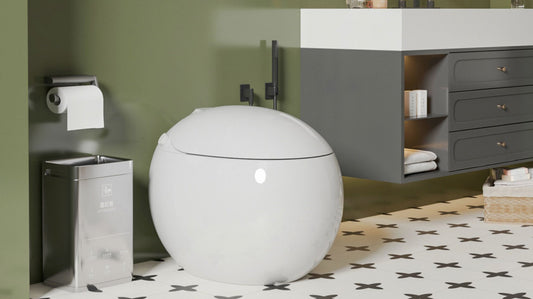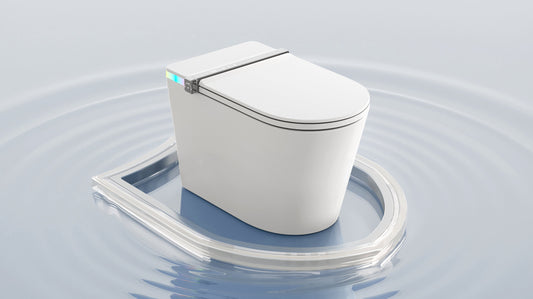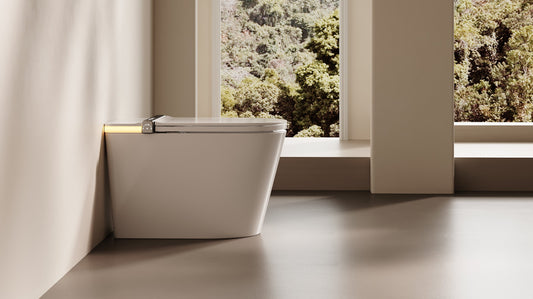
Eco Friendly Benefits of Smart Toilets Saving Water and Energy
In today’s world, sustainability and energy efficiency are becoming increasingly important in every aspect of our lives, including the bathroom. Smart toilets have emerged as a game-changer, offering eco-friendly solutions that save water and energy without compromising comfort or functionality. Equipped with advanced features like dual-flush systems, energy-efficient lighting, and leak detection, smart toilets are revolutionizing the way we think about water conservation and energy use. These innovative toilets are not just about luxury—they are a practical, eco-conscious investment that aligns with a greener lifestyle, making them an essential part of modern, sustainable homes.

Smart Toilet Technology and Sustainability
How Smart Toilets Use Advanced Features to Conserve Resources
Smart toilets integrate cutting-edge features like dual-flush systems, which allow users to choose between low and high water volumes, reducing unnecessary water waste. Motion-activated sensors ensure the toilet only flushes when needed, avoiding accidental or excessive use.
Additionally, features like pre-mist or rinse functions reduce the need for multiple flushes, ensuring optimal water usage with every cycle. These innovations align with eco-friendly goals by promoting efficiency in daily bathroom habits.
By combining intelligent technology and user-friendly designs, smart toilets enable homeowners to save water without compromising functionality or hygiene, making them an essential tool for sustainable living.
Materials and Manufacturing Processes That Support Eco-Friendliness
Smart toilets often use sustainable materials like low-impact ceramics and recycled plastics, reducing the environmental footprint during production. These materials are durable, ensuring a longer lifespan and less frequent replacement, which minimizes waste.
Advanced manufacturing processes, such as energy-efficient kiln firing and water recycling systems, further enhance eco-friendliness. By optimizing resource use during production, manufacturers reduce emissions and conserve vital resources.
Incorporating these practices not only benefits the environment but also appeals to eco-conscious consumers. Smart toilets thus represent a thoughtful approach to sustainability, blending innovative materials with responsible production techniques for a greener future.
Water Conservation with Smart Toilets
Dual-Flush Systems: Reducing Water Waste
Dual-flush systems in smart toilets allow users to select between a low-volume flush for liquids and a higher-volume flush for solids, significantly reducing water consumption. This flexibility can save thousands of gallons annually compared to traditional single-flush toilets.
These systems are designed to meet modern efficiency standards, often using as little as 0.8 gallons per flush for liquids. This is a vast improvement over older models that use 3 to 5 gallons per flush.
By customizing water usage to the task at hand, dual-flush systems offer an effective, eco-friendly solution for households aiming to conserve water and lower utility costs.
Leak Detection and Prevention: Saving Water Over Time
Some smart toilets are equipped with leak detection technology that monitors water flow and alerts users to potential issues, preventing unnoticed water wastage. Even small leaks can result in significant water loss over time, so early detection is crucial.
By providing real-time notifications via mobile apps or built-in indicators, these systems enable users to take quick action, avoiding costly repairs and excessive water usage.
This proactive approach not only saves water but also enhances the longevity of the toilet by identifying issues before they escalate, making it a smart investment for both the environment and your wallet.
Energy Efficiency in Smart Toilets
Energy-Saving Features: Heated Seats and Lighting
Smart toilets often come with energy-efficient heated seats and LED lighting, offering comfort without consuming excessive energy. These features are designed to use minimal electricity, drawing power only when needed.
Heated seats, for instance, typically have adjustable temperature settings, allowing users to customize energy usage based on personal preference. Low-energy LED lights also provide soft illumination while minimizing power consumption.
By integrating these energy-saving features, smart toilets ensure a comfortable experience while reducing overall electricity use. This balance of luxury and sustainability makes them an attractive choice for eco-conscious homeowners looking to reduce their carbon footprint.
Standby Modes and Automatic Power-Off to Minimize Energy Usage
Many smart toilets feature standby modes and automatic power-off functions that help minimize energy consumption when not in use. These modes detect inactivity, automatically powering down non-essential functions to conserve electricity.
For example, heated seats and built-in bidets are only activated when needed, ensuring they don't waste energy during idle periods. This feature is especially valuable in households where the toilet isn’t constantly in use.
By reducing unnecessary energy consumption, these smart systems contribute to a more sustainable household, lowering both environmental impact and utility bills without compromising performance or convenience.
Conclusion
Smart toilets are at the forefront of the movement toward sustainability, combining cutting-edge technology with eco-friendly benefits. From water-saving dual-flush systems to energy-efficient features like heated seats and automatic power-off modes, these toilets offer significant reductions in both water and energy usage. By adopting smart toilets, homeowners can enjoy enhanced comfort while making a positive impact on the environment. As we continue to seek innovative ways to conserve resources, smart toilets stand as a clear, efficient choice for anyone looking to create a more sustainable home.
